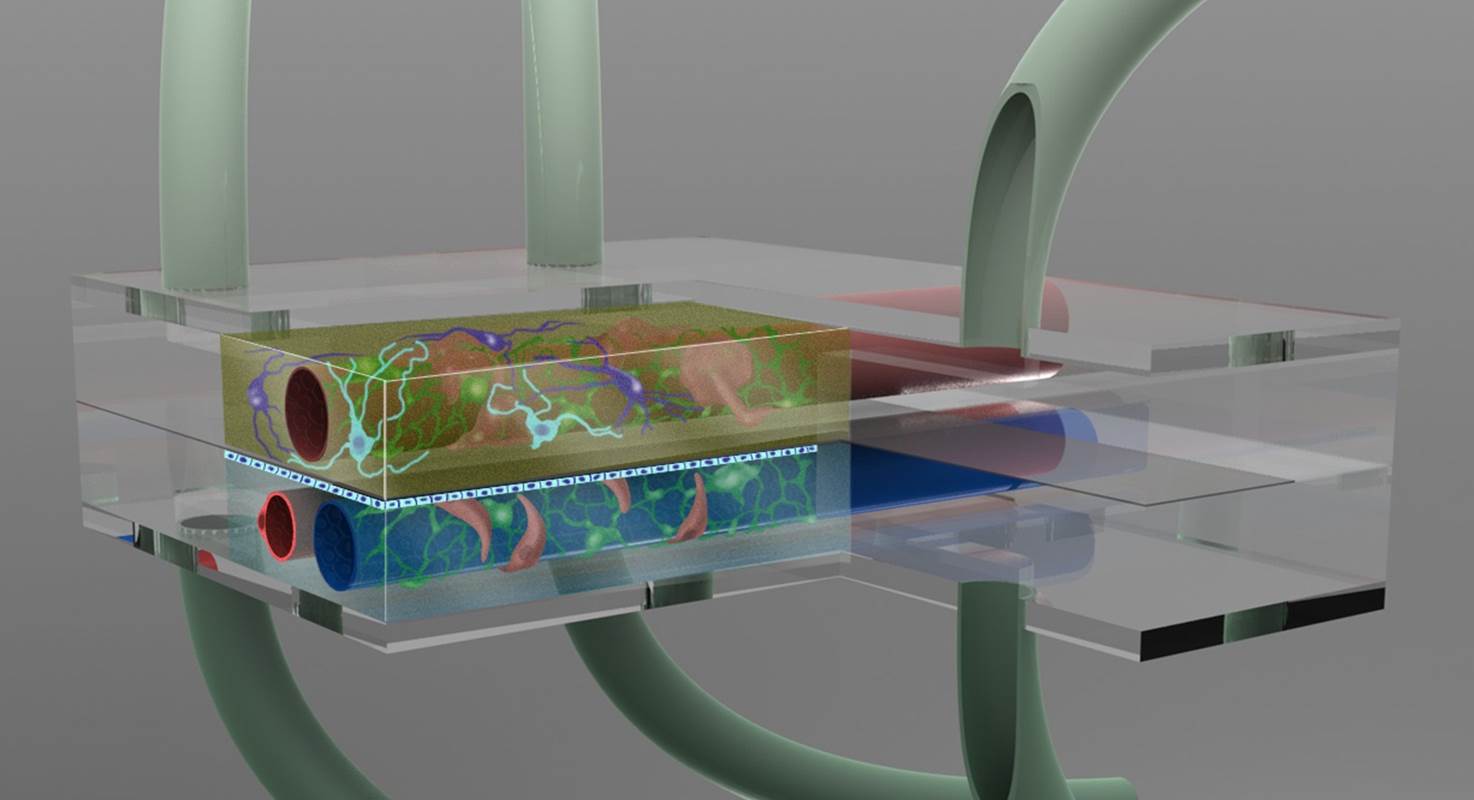Organs-on-a-Chip and Microphysiological Systems
Advances in tissue engineering and artificial organ systems are expected to have a major impact on drug discovery, screening, and assessment of efficacy and safety, and to facilitate basic research of cellular and subcellular mechanisms.
Coupled systems of in vitro microfabricated organs-on-a-chip and human organ constructs (HOCs) containing small populations of human cells are being de-veloped to address the formidable pharmacological and physiological gaps between monolayer cell cultures, animal models, and humans. These gaps present challenges not only in tissue and microfluidic engineering, but also in systems biology: how does one model, test, and learn about the communication and control of biological systems at the scale of individual organs on chips? Allometric scaling provides some guidance, but appropriate biochemical and functional scaling of multiple organs and a universal cell-culture medium are critical to proper systems function and valid pharmacological interpretation.
The ultimate potential of engineered organs or microphysiological systems will be realized by more complex, powerful, and integrated systems capable of recapitulating inter- and intra-organ signaling and dynamics. The operation of a single HoC requires a perfusion system functionally integrated into a tubing circuit with connections for medium inflow and outflow, pressure measurement, sample removal; pumps to recirculate and replenish culture medium; and sensors, actuators, and control electronics to regulate flow rates, pH, temperature, and gas mixtures. Real-time measurements of glucose, lactate, pH and oxygen allow the quantification of HoC metabolism, including aerobic vs. anaerobic processes, receptor activation, and other activities that affect metabolism.

Concept of Planar BBB NVU Chip
The Vanderbilt Institute for Integrative Biosystems Research and Education (VIIBRE) is currently building a planar Neurovascular Unit (NVU) on a Chip under NIH funding. VIIBRE is also building a cardiac papillary muscle-on-a-chip utilizing DTRA funding and additional supplementary funding was received to research a Retinal-Blood-Barrier-on-a-Chip.
In addition, VIIBRE is developing a hardware and multi-organ-chip integration platform for the DTRA X.C.E.L. program in collaboration with organ-on-chip teams from Charité – Universitätsmedizin Berlin (liver), Harvard University (heart), Los Alamos National Laboratory (lung, organ integration and integrated validation), University of California San Francisco (kidney).
VIIBRE OoC Publications
Wikswo,JP, Curtis,EL, Eagleton,ZE, Evans,BC, Kole,A, Hofmeister,LH, Matloff,WJ. Scaling and systems biology for integrating multiple organs-on-a-chip, Lab Chip, 13,3496-3511,2013 DOI Link PDF
OoC Scaling Spreadsheet (MS Excel)
*If you would like to have something changed in or added to the above document, please contact the webmaster.
John P. Wikswo, Frank E. Block III, David E. Cliffel, Cody R. Goodwin, Christina C. Marasco, Dmitry A. Markov, David L. McLean, John A. McLean, Jennifer R. McKenzie, Ronald S. Reiserer, Philip C. Samson, David K. Schaffer, Kevin T. Seale, and Stacy D. Sherrod. Engineering Challenges for Instrumenting and Controlling Integrated Organ-on-a-Chip Systems. IEEE Trans.Biomed.Eng. 60 (3):682-690, 2013. DOI Link PDF
S. Darby, M. Moore, J. P. Wikswo, R. Reiserer, T. Friedlander, D. K. Schaffer, and K. T. Seale. A metering rotary nanopump for microfluidic systems. Lab Chip 10 (23):3218-3226, 2010. DOI Link
